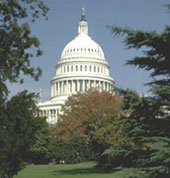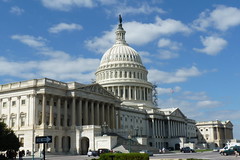
Congressional Budget Resolution

Top 400 Taxpayers See Tax Rates Rise, But There’s More to the Story
As Americans were gathering party supplies to greet the New Year, the Internal Revenue Service released their annual report of cumulative tax data reported on the 400 tax r...
read in full
Chlorine Bleach Plants Needlessly Endanger 63 Million Americans
Chlorine bleach plants across the U.S. put millions of Americans in danger of a chlorine gas release, a substance so toxic it has been used as a chemical weapon. Greenpeace’s new repo...
read in full
U.S. Industrial Facilities Reported Fewer Toxic Releases in 2014
The Toxics Release Inventory (TRI) data for 2014 is now available. The good news: total toxic releases by reporting facilities decreased by nearly six percent from 2013 levels. Howe...
read in full
Methane Causes Climate Change. Here's How the President Plans to Cut Emissions by 40-45 Percent.
UPDATE (Jan. 22, 2016): Today, the Bureau of Land Management (BLM) released its proposed rule to reduce methane emissions...
read in full
Living in the Shadow of Danger: Poverty, Race, and Unequal Chemical Facility Hazards
People of color and people living in poverty, especially poor children of color, are significantly more likely...
read in full
A Tale of Two Retirements: One for CEOs and One for the Rest of Us
The 100 largest CEO retirement funds are worth a combined $4.9 billion, equal to the entire retirement account savings of 41 percent of American fam...
read in full
Gasping for Support: Implementation of Tougher Air Quality Standards Will Require New Funds for State Agencies
New scientific research shows that the current levels of...
read in full



 From the outside, a great deal seems to be happening with the fiscal year (FY) 2012 budget process. The House debated a "clean" bill to raise the debt ceiling and is starting to vote on its yearly appropriations bills, and the Senate just voted on four budget proposals. But looks can be deceiving: despite these recent actions, the nation's budget process is teetering on the edge of irrelevance.
From the outside, a great deal seems to be happening with the fiscal year (FY) 2012 budget process. The House debated a "clean" bill to raise the debt ceiling and is starting to vote on its yearly appropriations bills, and the Senate just voted on four budget proposals. But looks can be deceiving: despite these recent actions, the nation's budget process is teetering on the edge of irrelevance. Even though the fiscal year (FY) 2011 budget battles are over, Congress is still deeply mired in fiscal work. News about "the budget" continues to flood the airwaves, along with breathless reporting about the impending debt ceiling crisis as federal debt levels reach their statutory limits. Incredibly large numbers are part of each new report, leaving many to wonder what's in the offing for fiscal policy in the coming months.
Even though the fiscal year (FY) 2011 budget battles are over, Congress is still deeply mired in fiscal work. News about "the budget" continues to flood the airwaves, along with breathless reporting about the impending debt ceiling crisis as federal debt levels reach their statutory limits. Incredibly large numbers are part of each new report, leaving many to wonder what's in the offing for fiscal policy in the coming months.

 Like all congressional budget resolutions, House Budget Committee Chair Paul Ryan's (R-WI)
Like all congressional budget resolutions, House Budget Committee Chair Paul Ryan's (R-WI) 



